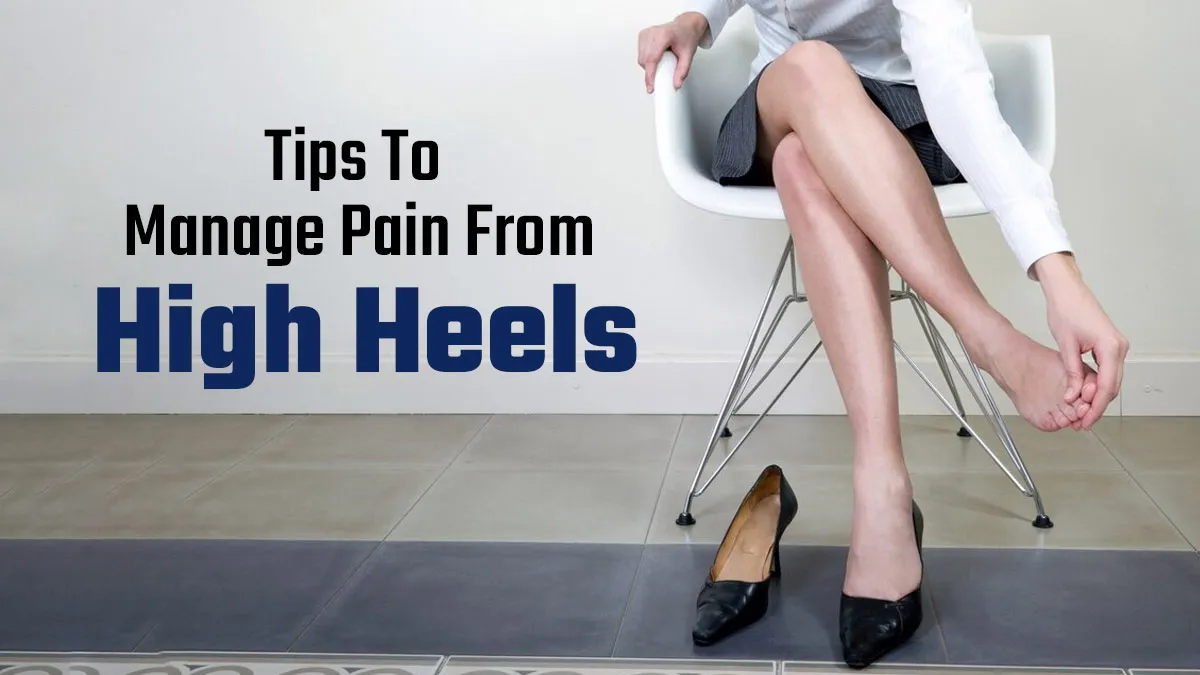
Women are often drawn to wearing high heels because of fashion, confidence, and cultural trends. High heels can make a woman's legs look longer and improve her posture. However, wearing them for a long time can cause problems. It can lead to serious foot issues like bunions, hammertoes, and ingrown toenails.
Table of Content:-
High heels can also cause pain in the lower back, knees, and feet because they change how weight is distributed. Dr. Manan Vora, an Orthopaedic Surgeon and Co-Founder of NutriByte Wellness in Mumbai, offers tips for relieving sore feet, including some exercises to try the day after wearing heels.
Exercises For Relieving Pain From Wearing High Heels
-1737098740300.jpg)
As per Dr Vora, below are a few exercises to relieve pain from wearing high heels. These exercises can help ease soreness and improve foot health after a long day in high heels. Regular practice can lead to stronger feet and reduced pain, allowing you to enjoy your favourite footwear more comfortably.
- Ball Release Under the Foot: Take a rubber spike ball and massage it under each foot 20 times to ease tension in the arches.
- Toe Spreading: Insert your fingers between your toes and gently move your ankles up and down to enhance flexibility.
- Toe Spacers: Use toe spacers or place a sock between your toes to encourage better alignment and minimise discomfort.
- Toe Extension: Sit in a chair and stretch your toes while keeping your heels on the ground, holding this position for a few seconds.
- Alternate Heel Raises: Stand up and alternately lift your heels to strengthen your calf muscles and improve balance.
ALSO READ: What Deficiency Causes Hypnic Jerks? Expert Share Tips To Manage Hypnic Jerks
How To Treat Heel Pain?
Heel Pain: Diagnosis and Management, a study published on PubMed, explains heel pain as a discomfort that occurs in the heel area of the foot. Some of the effective ways to treat it are mentioned below.
- Rest: Give your feet a break to allow healing, especially if your pain is due to overuse or improper footwear.
- Ice: Apply ice to the affected area for 10-15 minutes, two to three times a day, to reduce inflammation and numb the pain.
- Stretching: Perform stretching exercises for your feet and calves. Stretching helps improve flexibility and blood flow, aiding recovery.
- Pain Relievers: Over-the-counter medications like ibuprofen or acetaminophen can help alleviate pain and reduce inflammation.
- Shoe Inserts: Use orthotic inserts or heel cups in your shoes for added support and cushioning.
What Type Of Shoes Can Help Reduce Heel Pain?
You can reduce heel pain by choosing the right types of shoes. If you are planning to buy new shoes, keep these features in mind:
- Arch Support: Look for shoes that have good arch support to help keep your feet aligned and reduce strain.
- Cushioning: Choose shoes with gel or shock-absorbing cushioning in the heel to make walking more comfortable and absorb impact.
- Firm Heel Counter: Pick shoes with a strong heel counter to support your heel and limit movement that can cause pain.
- Wide Toe Box: Go for shoes with a spacious toe box so your toes can move freely, which helps avoid discomfort.
- Elevated Heel: Consider shoes with a slightly thicker heel to ease pressure on the Achilles tendon and provide extra support.
ALSO READ: Cold Weather and Cigarettes: Heightened Risks for Heart Disease and Impaired Lung Health
Conclusion
Wearing high heels can make you feel more confident and stylish, but it’s important to think about how they can affect your foot health. Doing exercises recommended by experts can help ease any discomfort the day after wearing heels. In the end, making sure your feet are comfortable is key to staying healthy and enjoying your favourite shoes without pain.
Also watch this video
How we keep this article up to date:
We work with experts and keep a close eye on the latest in health and wellness. Whenever there is a new research or helpful information, we update our articles with accurate and useful advice.
Current Version